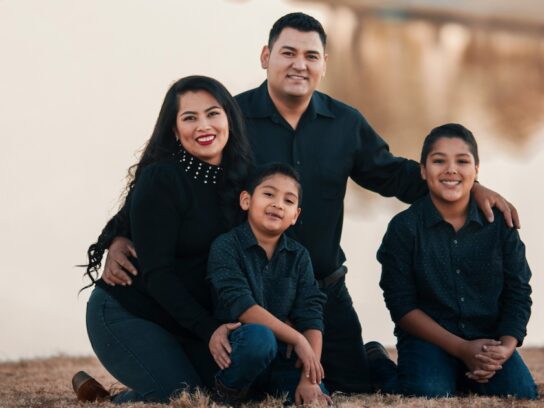
Family trusts, also known as living trusts or revocable trusts, can be valuable tools for managing and distributing assets. However, it’s vital to consider individual circumstances and goals when deciding whether to establish a family trust. In this blog, we cover the concept of family trusts, their purpose, and factors to consider when determining if setting one up is the right choice for you.
What is a family trust?
A family trust is a legal arrangement that allows individuals to protect and transfer their assets into a trust during their lifetime.
The parties involved in a family trust include:
- A grantor is the person who creates a trust and transfers assets to it.
- The trustee is the person responsible for managing the trust’s assets. This may be the individual themselves, another person they designate, or a financial institution.
- The beneficiaries are the individuals who receive some type of financial benefit from the trust. You can name your family members as beneficiaries of a family trust. This could be your children, spouse, grandchildren, siblings, aunts and uncles, cousins, or any other family members. A charity can also be a beneficiary.
What is the purpose of a family trust?
The primary purpose of a family trust is to manage and distribute assets according to the wishes of the trust grantor.
By placing assets in a trust, they can be managed and distributed without going through probate. Probate can sometimes cost more than $10,000 and can take several months to more than a year to process. So you can save money and time by establishing a family trust.
You can use a family trust to specify when the beneficiaries can access their share of the assets and the terms. For example, if you didn’t want them to receive the assets until they were 25 then you could stipulate that in the trust agreement.
What are the benefits of a family trust?
- Control and flexibility: A family trust allows the grantor to retain control over their assets during their lifetime. They can serve as the trustee and make decisions regarding the trust’s assets. The trust can also provide flexibility in determining how and when assets are distributed to beneficiaries, allowing for specific instructions to be included in the trust document.
- Minimize estate taxes: Some types of family trusts can help minimize estate taxes once the trust grantor passes away. Estate and gift taxes could substantially reduce the wealth of your estate.
- Privacy: One advantage of a family trust is that it helps maintain privacy because the trust document is not a public record that will be filed in probate court (like a will).
- Avoidance of probate: Generally, when you die, your estate goes through probate. This is a legal process that determines how it will be disbursed and what taxes and debts must be paid. Since assets held in the trust are not subject to probate, the distribution of assets can occur more quickly and with potentially fewer expenses. Wills do not bypass probates, but trusts can.
- Asset protection: A family trust can offer some level of asset protection. By transferring assets into the trust, they are held separately from individual ownership and may provide a level of protection against creditors or legal claims. The trust can also provide for the smooth transition of assets to beneficiaries upon the grantor’s death or incapacity.
While family trusts offer benefits, they may not be necessary or suitable for everyone. Setting up a family trust should be based on factors such as the size and complexity of the estate, as well as personal preferences and goals. To understand the legal and financial implications specific to your situation, you should consult with an estate planning attorney or a financial advisor.
Can a family trust be changed or revoked?
A family trust can be revocable or irrevocable depending on what you choose. A revocable trust, also called a living trust, is when a grantor can change the terms of the trust while he or she is still alive. Upon the death of the grantor, however, the trust becomes irrevocable, which means its terms cannot be modified. If the grantor chooses an irrevocable trust when it’s established then it is set in stone immediately. No one can alter its terms, not even the grantor.
The benefit of an irrevocable trust is that it can shelter assets from estate taxes. In irrevocable trusts, assets do not form part of the grantor’s estate. This means that they do not count towards their gross estate for tax purposes. However, this only applies to people with a lot of assets, as only estates valued at more than $12.92 million are subject to estate taxes in 2024.
How do I set up a family trust?
- Decide if a family trust is right for you: The first step is to talk with a financial advisor or estate planning lawyer before creating a family trust. They can help you decide if a family trust is right for you.
- Name the trustee: The second step is deciding who you want to act as the trustee. This could technically be yourself but it’s typically someone that you trust. Ensure that the chosen trustee is willing and capable of carrying out their duties.
- Name the beneficiaries: The third step is to decide who you want the beneficiaries to be. Clearly define their rights, entitlements, and any conditions or restrictions on distributions.
- Create the trust agreement: Work with an attorney to draft the trust document, also known as the trust agreement or declaration of trust. This legal document outlines the terms, conditions, and instructions for managing and distributing the trust assets. There are free software programs that you can use to create a trust agreement.
However, to ensure that the trust is properly structured and tailored to your specific needs, we recommend working with an estate planning attorney. - Fund the family trust: This means transferring assets to the ownership of the trustee. There are many things that can be part of a trust including real estate, bank accounts, stocks, vehicles, fine art, collectibles and heirlooms, and other investments. Consult with professionals such as financial advisors and tax experts to evaluate the tax implications and legal considerations associated with transferring assets into the trust.
- Sign and notarize the trust: Sign the trust document in the presence of witnesses and have it notarized. This makes the trust legally enforceable to ensure that your beneficiaries don’t run into any issues when it’s time to access the trust assets. Keep the notarized trust document in a safe place, and provide copies to the trustee, beneficiaries, and any other relevant parties.
Is a family trust a good idea?
A family trust may be a good idea if you want to put something in place for your loved ones, and your legacy. It is never easy to think about your death, but if you plan now, you will ensure that the estate that you leave behind benefits your family in the years to come. By doing so, you will ensure that your assets are protected and distributed according to your wishes.





































